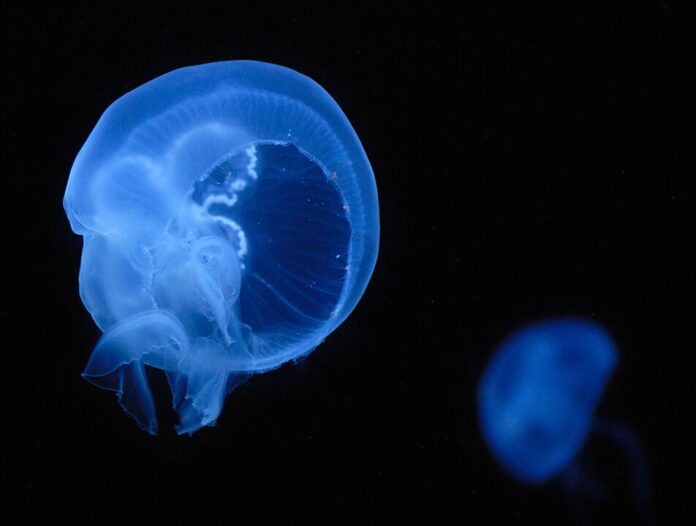
Thanks to rising sea temperature and an increasing number of weird and wonderful sea creatures are now paying a visit to the Welsh coast.
As many of us head to the beach this summer a biologist explains why we might be more likely than ever to encounter jellyfish, or even stingrays in the water.
Jellyfish Invasion: A biologist explains why our waters have more jellyfish than ever – and why stingrays could soon be joining them!
As the waters off Wales, England and even as far north as Scotland get warmer, they create a more favourable environment for the reproduction and survival of jellyfish, leading to a booming population of them in British and Irish seas.
While these creatures are fascinating, they can, in many cases, deliver a painful sting to bathers.
Although not usually fatal or even dangerous, they can ruin a day at the beach and for children or pets, cause serious reactions.
So, it’s worth knowing which jellyfish you’ve encountered and which ones to avoid.
Jellyfish Species currently living in British waters:
Moon Jellyfish (Aurelia aurita): This jellyfish has a translucent dome shaped bell with four distinct horseshoe-shaped purple rings (called gonads) visible through its bell. This jellyfish delivers a mild sting.
Lion’s Mane Jellyfish (Cyanea capillata): This Jellyfish a usually a yellow,orange or brown colour and is famous for its long and trailing tentacles. It can deliver a painful sting if you encounter it while swimming.
Barrel Jellyfish (Rhizostoma pulmo): This large mushroom shaped jellyfish can be white, baby pink or pale blue and is sometimes fringed with purple markings, it has a large, robust bell and is usually white or pale blue. Its sting is usually mild.
Compass Jellyfish (Chrysaora hysoscella): this Jellyfish has a clear or yellow tinged bell and has distinctive brown markings that radiate from its centre like a compass. It can deliver a painful sting.
Mauve Stinger (Pelagia noctiluca): As its name would suggest this jellyfish had a deep purple coloured bell with dark wart-like patterns. It has four frilled arms and eigh long tentacles. Another jellyfish known for its painful sting.
Portuguese Man o’ War (Physalia physalis): Technically not a jellyfish, however if its long venomous tentacles deliver a serious sting, you’re unlikely to be too worried about technicalities. Its trailing tentacles are attached to a distinctive blue, balloon-like float. Keep pets and children away from them if spotted.
Genevieve Watson, Biologist and Water Data Consultant at KISTERS explains why Jellyfish have become such a commons sight on British beaches in recent years:
“Rising sea temperatures are having a direct impact on marine life in all kinds of ways. Warmer waters can expand the habitat of marine species such as stingrays and jellyfish, allowing them to thrive in our coastal regions – areas that would have previously been too cold for them.
This is something that feels particularly noticeable as we are seeing these changes happening within our lifetimes. Few of us will look back to our childhood and remember ever seeing a stingray or jellyfish in the water at the seaside, but actually, for our children and grandchildren, this could be an increasingly common sight.
It’s most noticeable with jellyfish, as they are able to thrive in conditions that other marine life may not, because of their higher resilience to warmer temperatures.
We’ve seen increased reports over recent years of jellyfish blooms on the British coast as their population has exploded due to increasingly warm waters, it’s highly possible that stingrays could be next.”
– Genevieve Watson, Biologist and Water Data Consultant at KISTERS
Help keep news FREE for our readers
Supporting your local community newspaper/online news outlet is crucial now more than ever. If you believe in independent journalism, then consider making a valuable contribution by making a one-time or monthly donation. We operate in rural areas where providing unbiased news can be challenging. Read More About Supporting The West Wales Chronicle





















